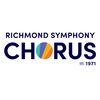|
In the fall of 1970, Jim Erb began rehearsals with his University of Richmond choir, in preparation for an upcoming European tour, the first by a UR choir. He selected a diverse repertoire and included some traditional American songs for the European audiences. He developed an arrangement of the folksong “Shenandoah” and made mimeographed copies of his handwritten composition to distribute to the singers.
|
|
